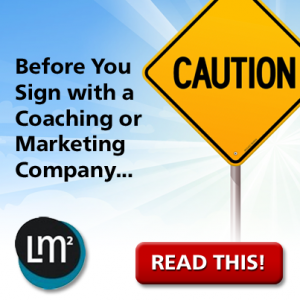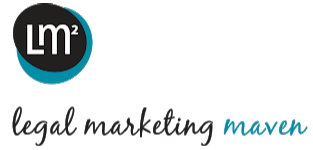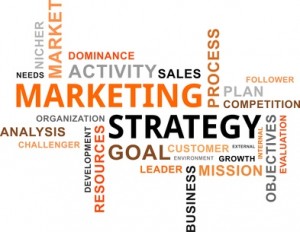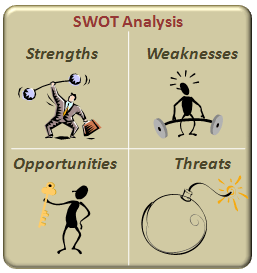Did I get your attention? Good, because this is important.

Spring tends to be an “open enrollment” free-for-all for many coaching, training and legal marketing organizations. We will in fact be having our own webinar March 5th to share details about our programs…..but that’s not the point of this post.
What you may not know about me or my company is that we regularly get to see the inner workings of many of these organizations. You might be surprised to know that we do behind- the-scenes campaigns, business development and copywriting for quite a few of them….many of which are well- known and highly- respected in this industry (and whom you may have considered our competition).
On the flipside, through our client base, we’ve worked with many other lawyer marketing and training organizations that are a mess internally and have significantly drained the finances of our clients. We are often hired to implement what these “coaches” or programs are teaching–and more often that not, it turns into our team cleaning up a huge mess when the attorney breaks up with the company or quits the program.
It’s no wonder why I’ve been bombarded with Facebook messages and emails this week asking me what I think of the various offerings, enrollments and teleclasses happening right now.
Let me first be clear that there are some very good companies and organizations out there....and hiring a coach or a legal marketing agency can be one of the best decisions you will ever make in the quest to grow your firm. Again, I don’t just speak of our company… because there are MANY times that I refer clients to trusted colleagues who may be a better fit. But as a whole, if you are serious about taking things to the next level in your practice, getting a mentor or some hands-on help is a great place to start.
But there are also companies in the legal industry right now who are all smoke and mirrors and quite frankly dangerous to your sanity and your bottom line.
In an attempt to help you make the best decisions if you are looking to join a program or hire a legal marketing company this Spring, I’ve compiled a few “warning signs” that I’ve been offering to the attorneys reaching out for my opinion. Heeding this advice could mean the difference between having a thriving law practice or one saddled with six-figures of debt with little to nothing to show for it next year. Here they are:
1. Avoid companies that could hold your intellectual property hostage– Without mentioning names, it has shocked some of our clients to find out that they are merely RENTING their fancy website or other IP from their marketing agency each month. When they decide to part ways the company, they retain ZERO ownership of the site and many times ZERO ownership of the content. We had one client who signed with a well-known company and when they launched her new site, they completely deleted her old one with all of her blogs and links that she worked so hard to build for SEO. Then once she realized this company was taking her for a ride and she quit, they deleted her site a second time and she lost everything AGAIN. We’ve also seen marketing agencies and companies who insist on “hosting” websites, email lists and client databases so that you can’t access them or make changes without their help. They retain all the power and you are at their mercy in a sad attempt to get you to stay on board. Avoid these situations at all cost!
2. Watch for companies and organizations that make you scrub content when you’re not in “good standing.” Imagine this: You pay 6-figures to be in a program and invest in their marketing campaigns, systems and products. Over the course of time, you outgrow the program or it’s not a good fit. After dealing with the expected calls & emails trying to get you to stay in the program, the company then comes back with a vengeance, stalking you at every turn and insisting that if you leave, you must remove every blog article, report and campaign that YOU PAID FOR because you are no longer in good standing and it really never belonged to you in the first place. Unbeknownst to you…your six-figure investment only allowed you to “rent” some marketing and ideas. We see it happen almost monthly and it infuriates me. That’s why when we create marketing for clients, they own it. If we spend time building their blog up, we aren’t going to sabotage their SEO years down the road and insist everything comes down if we part ways. So before you join any program, get clear on content ownership and their rules for usage. Then decide if it’s palatable for you if you breakup in the future.
3. Long-Term Commitments– As a marketing professional, I understand that some commitment time is necessary to truly gauge your results, but be cautious of long- term commitments that leave you stuck if the program turns out to be the exact opposite of what you signed up for….or just not the right fit for YOU. It happens and you should be prepared for it.
4. Make sure you can speak to CURRENT CLIENTS– A company may put out great testimonials showing results of their clients, but go one step further and ask to speak to people who are currently in the program. You may be surprised to see a company using testimonials that speak of results from 5-10 years ago, which have not been duplicated since (I’ve actually seen companies using testimonials from lawyers whom I personally know went out of business and no longer practice law!)
5. Do they work with your competition? A VERY important question to ask right up front is whether the company or agency works with other attorneys in your geographical area. If so, how many and what’s the scope of the work? Here’s why this matters. Let’s say you hire someone to do SEO. If the company is trying to increase rankings for you and your competitor down the street, they are essentially competing with themself. Will you come out on top or will their other client? It’s unethical and puts you and them in a bad position. Or say you hire a PR person. You don’t want someone approaching journalists or producers with the same exact press releases being used by someone else. That’s a fast way to make a bad name for yourself in the local media. Or, in the case of marketing materials, you don’t want the exact same newsletter going out to the same pool of people in your community….and you don’t want to be reaching out to referral sources with the same campaigns and seminar info as the guy down the street. As a rule of thumb, we only take one client per media market, because we do PR & blog content for SEO. We literally have waitlists because of this rule, and I’ll be the first to admit that as a business owner, it’s hard to turn away a paying client. But any other way would be icky, and my integrity and the peace of mind of our clients means more to me than money. Of course this can vary based on the nature of the services being offered, but make sure your coach or agency feels the same.
6. Is there “stickiness” among the members?- Pay close attention to whether or not the company or coach has long-term clients. For example, one particular organization for estate planning attorneys that we work with has had members in their program for over 15 years! That says something about an organization. On the flipside, if they are a newer agency or organization, check out the results of the leaders. Have they successfully done what they want to teach you how to do? Are they still doing it, or did they get lucky for a year and now they are trying to cash in on that fleeting success? Have they been successful at duplicating their efforts….or are they all talk and theory and no action? This matters more than you think.
7. Who is on the team? With many companies transitioning to done-for-you services these days (hey–we’re trendsetters…what can we say!), it’s important to scrutinize the actual team since they will probably have more interaction with your firm than the company’s figurehead. For example, everyone on our team has a legal background and most have worked in law firms. I would never allow someone control over an attorney’s social media accounts, for example, who didn’t understand the law….or have a basic understanding of the English language. Other companies are using outsourced teams overseas to do these tasks. Your image and your ethics are on the line. Find out who exactly will have their hands on your account and make sure everything is to your satisfaction.
8. If you are working with an agency, where are they driving traffic? Not long ago, one of our clients hired an outside agency to do Pay-Per-Click ads for them. Instead of driving to the firm’s website, they company insisted on creating separate sites using ALL OF THE FIRM’S CONTENT! They were basically “duplicating” the site exactly and driving the ads to the site they owned with a different phone number. They also wanted to change the local profiles in Google and Yahoo using this “duplicated” site as well. Again, the name of the game is to stay in control so always find out where your leads are driving to and what happens when the company is no longer in the picture.
These are just a few things to look out for if you are seeking to hire a marketing agency or join a coaching program this year. Of course no company is perfect and it’s important to have a realistic expectation of results going into it. Your results could vary on your budget, your niche, your area, etc…..but these are some steps you can take to ensure you suffer the least amount of pain and financial loss if the services are not what you expected them to be.
Would you like to talk about how we can help you save time on your marketing and help you turn ideas into action? Simply schedule a time on my calendar for a no-strings virtual cup of coffee.
 Mystery shopping has been used in the retail industry for years and years as a way to gauge the establishment’s performance from the other side of the cash register. The idea is to get someone to come to the store or restaurant and simply act like a normal shopper. The mystery shopper would simply ask the staff questions, partake of the service or products sold, and make a purchase. The mystery shopper would then rate the performance and provide feedback. This feedback would then be used to identify where training is needed or where there might be a complete overhaul needed.
Mystery shopping has been used in the retail industry for years and years as a way to gauge the establishment’s performance from the other side of the cash register. The idea is to get someone to come to the store or restaurant and simply act like a normal shopper. The mystery shopper would simply ask the staff questions, partake of the service or products sold, and make a purchase. The mystery shopper would then rate the performance and provide feedback. This feedback would then be used to identify where training is needed or where there might be a complete overhaul needed.














